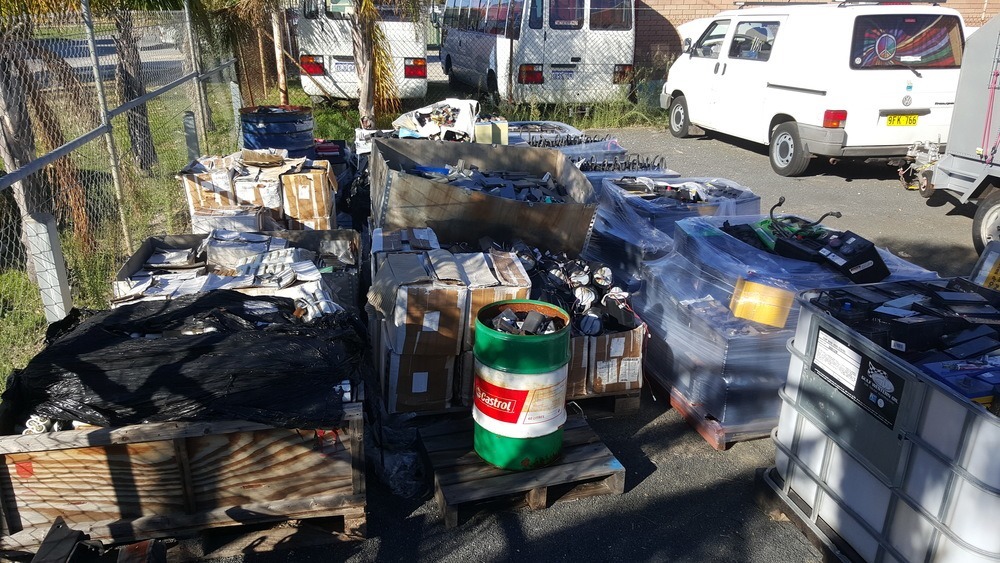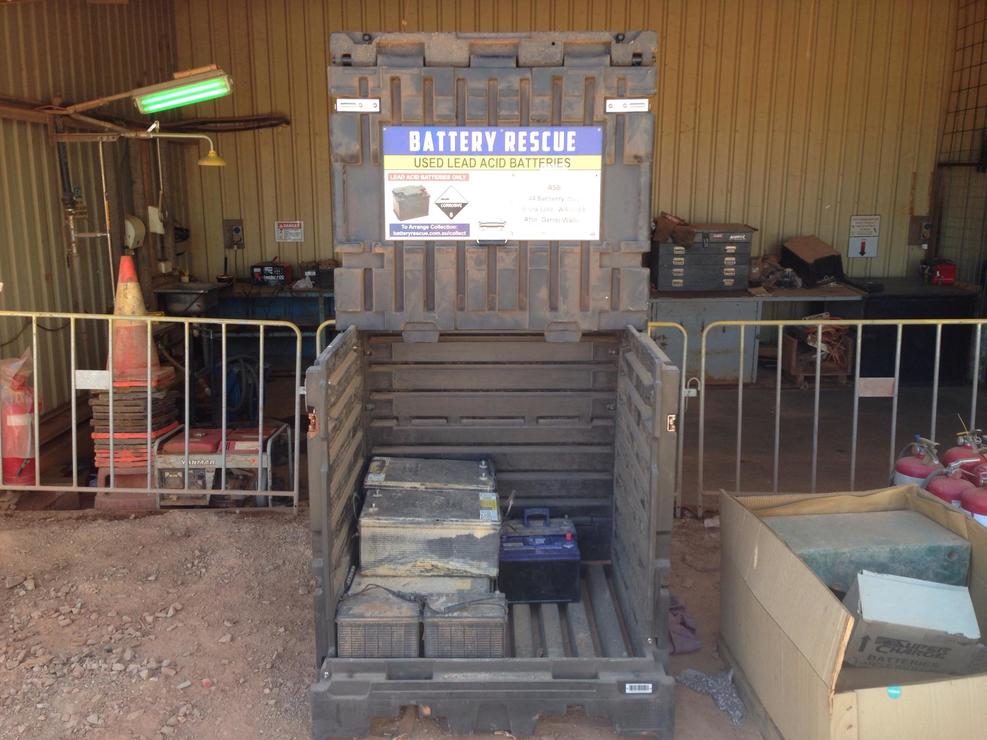What are the ADGC packaging requirements for transporting batteries in a plastic bin?
There has been some confusion and industry debate as to what the packaging requirements are when transporting used lead acid batteries in plastic bins or containers and in particular whether the “Additional Requirements” in the Australian Code for Transportation of Dangerous Goods (ADGC), P801 Packing Instruction apply.
The confusion and disagreement stems from the “used lead acid batteries” clause in the P801 Packing Instruction (shown below), that states “Used storage batteries may also be transported loose in stainless steel or plastic boxes capable of containing any free liquid”, in blue, and specifically the inclusion of the word “loose” seems to directly contradict Additional Requirements 2 and 4, in red, both of which would require the batteries to be secured in the box. If those requirements were enforced, it would totally negate the provision of this clause.
| P801 PACKING INSTRUCTION |
| This instruction applies to new and used batteries assigned to UN Nos. 2794, 2795 or 3028. |
| The following packagings are authorized, provided the general provisions of 4.1.1, except 4.1.1.3, and 4.1.3 are met:
(1) Rigid outer packagings; (2) Wooden slatted crates; (3) Pallets. Used storage batteries may also be transported loose in stainless steel or plastics battery boxes capable of containing any free liquid. |
| Additional requirements:
1. Batteries shall be protected against short circuits. 2. Batteries stacked shall be adequately secured in tiers separated by a layer of non conductive material. 3. Battery terminals shall not support the weight of other superimposed elements. 4. Batteries shall be packaged or secured to prevent inadvertent movement. Any cushioning material used shall be inert. |
| Special Packing Provision:
PP1A For road or rail transport only within Australia:, it is permissible to dispense with outer packagings for batteries provided the provisions of the above ‘additional requirements’ are met. |
Why We Believe the ADGC P801 “Additional Requirements” Don’t Apply
We believe that the “additional requirements” do not apply when transporting used lead acid batteries in plastic bins or containers, for the following reasons;
Firstly the Special Packing Provision, PP1A in the P801, states;
“For road or rail transport only within Australia:, it is permissible to dispense with outer packagings for batteries provided the provisions of the above ‘additional requirements’ are met.”
The converse of this provision is that the ‘additional requirements’ are not required when outer packagings are being used. A plastic bin or container would meet the definition of an “outer packaging” under the ADGC.
Secondly both the European’s and the UN have modified the used battery packaging requirements and in each instance the “additional requirements” have been eliminated when transporting ULAB in plastic bins / containers.
In 2011 the Europeans adopted the P801a Packing Instruction, into their ADR regulations (shown below). The P801a PI is specifically for the transportation of used batteries in stainless steel or plastic battery boxes and has none of the ‘additional requirements’ stated in the ADGC.
| P801a | PACKING INSTRUCTION | |
| This instruction applies to used batteries of UN Nos. 2794, 2795, 2800 and 3028. | ||
| Stainless steel or solid plastics battery boxes of a capacity of up to 1 m3 are authorized provided the following provisions are met:
(1) The battery boxes shall be resistant to the corrosive substances contained in the storage batteries; (2) Under normal conditions of carriage, no corrosive substance shall leak from the battery boxes and no other substance (e.g. water) shall enter the battery boxes. No dangerous residues of corrosive substances contained in the storage batteries shall adhere to the outside of the battery boxes; (3) The battery boxes shall not be loaded with storage batteries to a height greater than the height of their sides; (4) No storage battery containing substances or other dangerous goods which may react dangerously with one another shall be placed in a battery box; (5) The battery boxes shall be either: (a) covered; or (b) carried in closed or sheeted vehicles or containers. |
||
In June 2018, the UN Subcommittee of Experts for the Transportation of Dangerous Goods, approved a new P801 PI for batteries. The new P801 Packing Instruction is shown below showing deletions from the current P801. This revised PI now includes expanded provisions for the transporting of used batteries in stainless steel or plastics bins and has removed the ‘additional requirements’ in the previous PI. This will come into effect in the next edition of their “Recommendations on the Transport of Dangerous Goods – Model Regulations”.
| P801 PACKING INSTRUCTION |
| This instruction applies to UN Nos. 2794, 2795 or 3028 |
| The following packagings are authorized, provided that the provisions of 4.1.1.1, 4.1.1.2, 4.1.1.6, and 4.1.3 are met:
(1) Rigid outer packagings, wooden slatted crates or pallets. (2) Wooden slatted crates; (3) Pallets. Additionally, the following conditions shall be met: (a) Batteries stacks shall be in tiers separated by a layer of electrically non-conductive material; (b) Battery terminals shall not support the weight of other superimposed elements; (c) Batteries shall be packaged or secured to prevent inadvertent movement; (d) Batteries shall not leak under normal conditions of transport or appropriate measures shall be taken to prevent the release of electrolyte from the package (e.g. individually packaging batteries or other equally effective methods); and (e) Batteries shall be protected against short circuits.
(4)(2) Stainless steel or plastics bins may also be used to transport used batteries. Additionally, the following conditions shall be met: (a) The bins shall be resistant to the electrolyte that was contained in the batteries; (b) The bins shall not be filled to a height greater than the height of their sides; (c) The outside of the bins shall be free of residues of electrolyte contained in the batteries; (d) Under normal conditions of transport, no electrolyte shall leak from the bins; (e) Measures shall be taken to ensure that filled bins cannot lose their content; and (f) Measures shall be taken to prevent short circuits (e.g. batteries are discharged, individual protection of the battery terminals, etc.). |
Future Changes to the ADGC P801?
Since early 2017, Battery Rescue has been working with the Western Australian Department of Mines & Petroleum (now DMIRS) to modify the ADGC P801 Packing Instruction along the lines adopted in the European’s P801a and the recently revised P801 packing instruction, approved by the UN in June 2018.
Battery Rescue’s submission to DMIRS is shown below, with proposed changes to the UN’s newly approved P801 PI, shown in red;
| P801 PACKING INSTRUCTION P801 |
| This instruction applies to UN Nos. 2794, 2800, 2795 or 3028 |
| The following packagings are authorized, provided that the provisions of 4.1.1.1, 4.1.1.2, 4.1.1.6, and 4.1.3 are met:
(1) Rigid outer packagings, wooden slatted crates or pallets. (2) Wooden slatted crates; (3) Pallets. Additionally, the following conditions shall be met: (a) Batteries stacks shall be in tiers separated by a layer of electrically non-conductive material; (b) Battery terminals shall not support the weight of other superimposed elements; (c) Batteries shall be packaged or secured to prevent inadvertent movement; (d) Batteries shall not leak under normal conditions of transport or appropriate measures shall be taken to prevent the release of electrolyte from the package (e.g. individually packaging batteries or other equally effective methods); and (e) Batteries shall be protected against short circuits (e.g. use of plastic, not steel, strapping).
(4)(2) Stainless steel or plastics bins may also be used to transport used batteries. Additionally, the following conditions shall be met: (a) The bins shall be resistant to the electrolyte that was contained in the batteries; (b) The bins shall not be filled to a height greater than the height of their sides; (c) The outside of the bins shall be free of residues of electrolyte contained in the batteries; (d) Under normal conditions of transport, no electrolyte shall leak from the bins; (e) A rigid lid is required to ensure adequate load restraint of the batteries in case of vehicle rollover, and to stop the ingress of water; and (f) Measures shall be taken to prevent short circuits (e.g. batteries are discharged, individual protection of the battery terminals, batteries stacked in ways so the terminals touch the insulating body of other batteries, or in ways that insulate the terminals, exclude or insulate steel case batteries etc.)
|
DMIRS will review this submission along with a submission made by the Australian Battery Recycling Initiative (ABRI), before finalising their proposal for consideration at the next Competent Authorities Panel (CAP), meeting scheduled for May 2019.
Useful Link
For a comprehensive summary of the ADGC transportation regulations for used lead acid batteries






